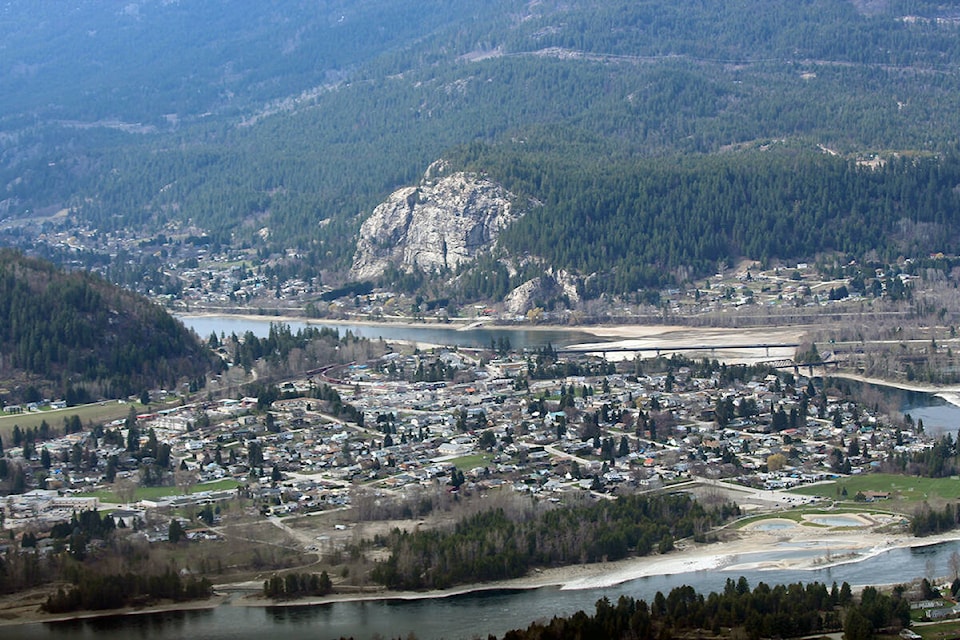Results from the 2021 census were released in increments throughout 2022. Here is a summary of what we learned about Castlegar.
Castlegar is growing
The Castlegar area grew by 752 people in the last five years.
The City of Castlegar saw population growth of 3.7 per cent (299 people), the Regional District of Central Kootenay Area I, which includes Brilliant, Pass Creek, Thrums, Tarrys and Shoreacres grew by 2.9 per cent (73 people) and RDCK Area J, which includes Ootischenia, Robson, Deer Park, Syringa and Fairview grew by 12.1 per cent (380 people).
That gives the City of Castlegar an official population of 8338. Area I is up to 2,607 and Area J has 3,517.
The average household size in the City of Castlegar was 2.3.
Age demographics remained consistent
The majority of Castlegar’s 8,338 residents continue to be in their working years, with 60 per cent falling between the ages of 15 and 62. Children ages 14 and under account for 15 per cent of the population and seniors over the age of 65 account for 25 per cent of the population. Percentage wise, there was a slight (two-per-cent) drop in the adult category and a slight (2.5-per-cent) increase in the senior category.
The average age of residents remained virtually unchanged since the last census at 44.9.
Marriages decline, but still vastly outnumber common-law
Relationship status was available for 7110 residents age 15 and older.
Almost half — 45 per cent — were married and 13 per cent were living in a common-law relationship.
That was a slight shift from the 2016 census with 120 more people in common-law relationships and 95 less in marriage relationships.
RELATED: YEAR IN REVIEW: 2022 in photos
People are making more money
Income information for residents age 15 and older showed a median income of $40,800 in 2020, up from $33,321 in 2015.
The median household income for a one-person household was $42,000, while households with two or more people earned $103,000. About 39 per cent of households earned more than $100,000 and seven percent earned more than $200,000.
Punjabi and Korean are Castlegar’s fastest growing languages
While some languages such as Punjabi, Spanish and Korean grew, others declined, resulting in an overall loss of 60 of those who claim a mother tongue other than French or English.
980 residents reported a mother tongue other than one of Canada’s official languages.
The languages that saw the biggest drops between censuses were Russian (from 390 to 305) and Portuguese (from 130 to 110). A decade ago, the 2011 census reported 445 people whose mother tongue was Russian and 165 who began their lives speaking Portuguese.
The language that saw the largest growth was Punjabi, increasing by 40 speakers to 105. As a whole, Indo-Iranian languages (including Punjabi) jumped from 95 to 140. Next was Korean, which increased by 30 from 10 speakers to 40.
The community has 310 people who report they speak a language other than English or French at home most often.
Our Indigenous population is growing
The number of people living in Castlegar that self identify as Indigenous has grown over the last five years — 550 residents identified as Indigenous. This is an increase of 135 over the 2016 census.
About two-thirds of the city’s Indigenous population identifies as Métis.
Castlegar’s Indigenous population grew at a much higher rate (32.5 per cent) than the overall population (3.7 per cent). Indigenous residents now make up 6.8 per cent of the population, compared to 5.3 per cent in 2016.
In the rural area surrounding Castlegar, the Indigenous population also grew.
The Regional District of Central Kootenay Area I (including Pass Creek, Thrums and Shore Acres) saw an increase of 40 Indigenous residents for a total of 150 and Area J (including Ootischenia, Robson and Deer Park) grew by 10 to 220.
Fewer households are living in unaffordable accommodations
Census data shows 2700 households (76 per cent) own their homes, which is down from 2721 counted during the 2016 census. The number of renting households meanwhile rose from 775 to 845 over five years.
Statistics Canada shows a drop in what is considered unaffordable housing in Castlegar. Unaffordable housing is defined as costing more than 30 per cent of a household’s income before tax.
In Castlegar, 13.7 per cent of households (485) spend more than the 30-per-cent threshold. That’s an improvement of five per cent from 2016, and well below the provincial mark of 25 per cent.
Immigration numbers doubled
Immigration continues an upward trend in Castlegar as numbers nearly doubled over the last census period.
Castlegar added 90 immigrant residents between 2016 and 2021. That five year total is almost double the number of immigrants that arrived during the previous five year span of 2011 - 2015.
While the number may still seem small, it shows a trend of growing foreign immigration in the community.
At the time of the 2021 census, there were 690 immigrants living in Castlegar. That’s about 8.5 per cent of the population.
Religious affiliations drop, but remain significant
The number of Castlegar residents that claim a religious affiliation decreased by about 10 per cent in the last 10 years. About 40 per cent of local residents are connected to a faith, compared to 50 per cent in 2011.
The majority of religious residents (2855) practice a form of Christianity. Just over 35 per cent of Castlegar’s residents are Christian.
The remaining religious residents include Sikhs (115), Hindus (65), Buddhists (40), Muslims (30) and Jewish (10).
The largest drop from 2011 to 2021 was seen in Catholics, who decreased by 305, or 26 per cent of their total. Christianity as a whole dropped from 47 per cent of the population to 35 per cent, a decrease of about 700 people.
The local trend follows that of British Columbia, which is the least religious province in the country.
RELATED: YEAR IN REVIEW: Castlegar News’ most-read stories of 2022
betsy.kline@castlegarnews.com
Like us on Facebook and follow us on Twitter
